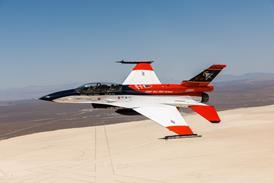Modelling and physical testing technologies must improve to achieve the 80% nitrogen oxides emission reduction target set by the Advisory Council for Aeronautics Research in Europe (ACARE), say leading European engine technology developers.
"Lean burn systems will meet the ACARE challenge, but some subtechnologies need maturing and demonstration. There is a need for high-pressure test rigs, optically accessible facilities for diagnostics using advanced laser diagnostics and instrumentation," says a consortium including Rolls-Royce and Snecma, which drew its conclusions after finishing the European Union Sixth Framework Programme European Low Emission Combustion Technology in Aero-Engines (Elect-AE) project. The conclusions will inform three projects the consortium will put forward for the EU's Seventh Framework programme.
The projects are called Elect-AE two, which Snecma will co-ordinate, and Fuel Injection Research for Sustainable Technology in Aero-Engines (First-AE) and the Integrated Lean Low-Emission Combustor Design Methodology two (Intellect DM II). Both will be led by R-R. The first Intellect DM project was to run from 1 January 2004 to 31 December 2007. But extended work with a test rig using lasers to study lean burn combustion has led to an extension to mid-2009.
First-AE and Intellect DM II will be proposed for the Seventh Framework's third call, the deadline for which will be in the third quarter of 2010. The consortium has yet to decide when to submit Elect-AE II.
Its members told Flight International that while "numerical methods", modelling, is making substantial progress, accurate spray, ignition and thermo-acoustic simulation must also improve. The goal is to couple computational fluid dynamics with computer-aided design data and stress codes to model whole engine sections.
Framework programme work has already led to European reduced emissions combustion research being redirected from double annular and axially staged concepts to single annular combustors with lean burn modules featuring centrally integrated pilot injection points. The consortium's next strategy workshop has been scheduled for the third quarter of this year. Its members also include MTU Aero Engines, the French and German aerospace agencies, ONERA and DLR, France's Turbomeca and Italy's Avio.
Source: Flight International
















